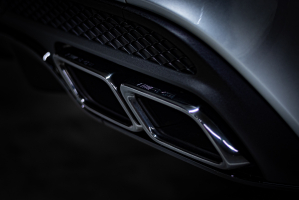Top 11 Best Japanese Foods
Japanese cuisine is exquisite in terms of flavor complexity, seasonal variety, and surprising health benefits. Rice or noodles are almost always served with ... read more...soup, pickles, and at least one okazu side dish of fish, meat, vegetable, or tofu in a typical Japanese meal. As an island nation, the Japanese diet is heavily influenced by seafood and provides a great deal of variety by utilizing seasonal ingredients. Japanese cuisine is a feast for the eyes as well as the stomach, as it is always artfully presented and a product of centuries of history. Check out these traditional Japanese dining options to get your stomach grumbling. Itadakimasu!
-
Set meals are very common, especially at lunchtime, and almost every restaurant offers them. Rice, pickles, soup, and a main dish of fish, seafood, vegetables, or meat are usually included in a set meal. Teishoku dining is a great introduction to everyday Japanese food because it offers a lot of food for a low price.
Kaiseki, a traditional Japanese tasting menu, is available at some of the better restaurants. Kaiseki is regarded as an art form, requiring a careful balance of taste, texture, appearance, and color, as well as the use of only fresh seasonal ingredients. Expect opulent presentation and above-average prices.
Moreover, Teishoku is a term used to describe a variety of food items. Grilled items, deep fried items, broiled items, noodle-centric items, and Chinese dishes are the most common types of Teishoku. Meat, such as beef or chicken, is commonly grilled. Meat, often pork, fish, and vegetables are all deep fried. Salmon broiled in soy sauce is an example of a broiled item. Udon and Ramen are two common noodle dishes that can be ordered as Teishoku. Finally, dumplings, also known as Gyoza in Japan, are a good example of a Chinese item.
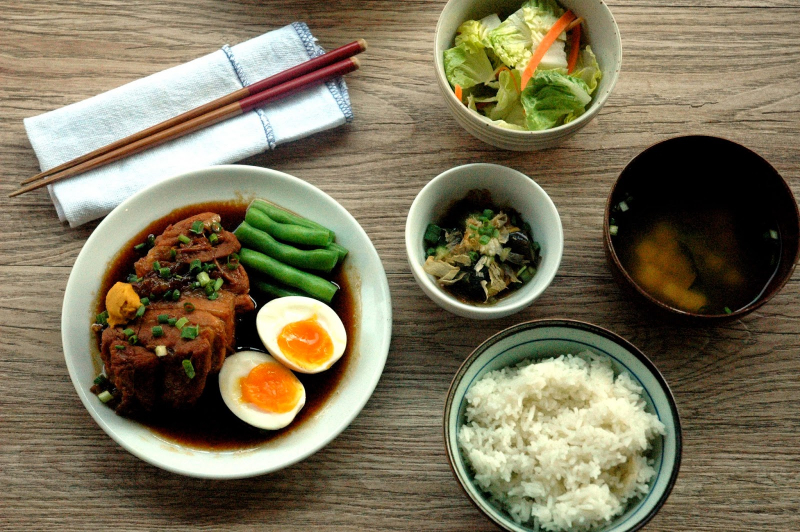
https://www.pinterest.com 
https://www.pinterest.com -
Tempura is a popular Japanese dish in which food is lightly battered and deep fried to create a light, crispy coating. When you see "tempura fried" on a menu at your favorite Japanese steakhouse, it simply means that the food has been dipped in this batter and fried.
Although this cooking method is associated with Japanese cuisine, it is unclear whether it originated in Japan or was brought to Japan by Portuguese missionaries in the 16th century and later adopted into Japanese cuisine. However, the spread of mainstream, Tokyo-style (Edo) tempura can be traced back to the Edo period's street vendors who surrounded the fish market.What began as simple street food has evolved into a serious Japanese cooking technique that takes years to master. Tempura is one of Japan's most popular dishes because it is crispy, tasty, healthy, and inexpensive. To prevent the loss of nutritious vitamins and minerals, your choice of prawns, fish, squid, vegetables, or tofu is lightly battered and deep-fried quickly. Tempura can be served alone, but it's more commonly served with noodles or rice and a variety of dipping sauces.

https://jw-webmagazine.com 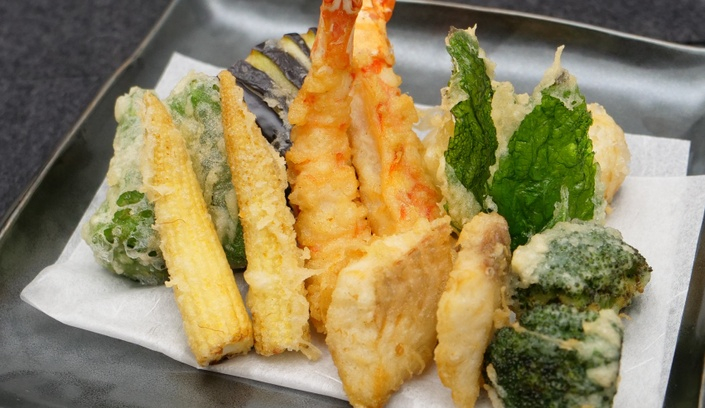
https://www.master-jpcuisine.com/p/tempura_veg -
Noodles are a tasty and inexpensive alternative to rice-based meals. Soba noodles are made from buckwheat flour and come in a greyish color. They can be served hot with broth or cold with a dipping sauce. Udon is a type of thick wheat noodle served hot or cold with a soy or fish soup.
Ramen is perhaps the cheapest and most popular type of noodle in Japan, with over 10,000 specialty shops across the country (although originally from China). Ramen is served with a hot broth made from fish, pork, miso, or soy and is usually topped with tempura, crumbed pork fillets, or slices of meat.
A vending machine system is used by many noodle shops. When you arrive, simply purchase a ticket from the vending machine. Choose your preferred noodle temperature (hot or cold), thickness (thick or thin), serving size, and topping. Give the receipt to the chef or other staff member who will prepare it right away. Find a spot to sit or stand and enjoy slurping your noodles with the rest of the group.

http://japanology.org 
https://www.thespruce.com/tsukimi-soba -
Okonomiyaki is a savory Japanese pancake with a wide range of ingredients. The name comes from the Japanese words okonomi, which means "how you like," "what you like," or "favorite," and yaki, which means "grill."
The dish varies depending on where it is prepared in Japan, but it can be found almost anywhere. The Osaka-style okonomiyaki, also known as the Kansai-style, is perhaps the most popular. Osaka is known for its cheap and plentiful food culture. The Hiroshima-style, which is layered, is the other most well-known version.Okonomiyaki is a fun, interactive way to eat that is ideal for large groups. Basically, okonomiyaki is a batter that is mixed with all of your favorite ingredients and then fried like a pancake right in front of your eyes on the grill. Okonomiyaki means 'grill your favorite,' and there is a wide range of ingredients to choose from, including seafood, beef, chicken, and bacon, as well as tofu, cheese, corn, onion, and other vegetables.
The okonomiyaki is topped with a rich brown sauce, mayonnaise, and dried bonito flakes after the batter has cooked. Each member of the group usually orders their own okonomiyaki, and many restaurants allow you to cook your own, which is a fun addition to the meal.
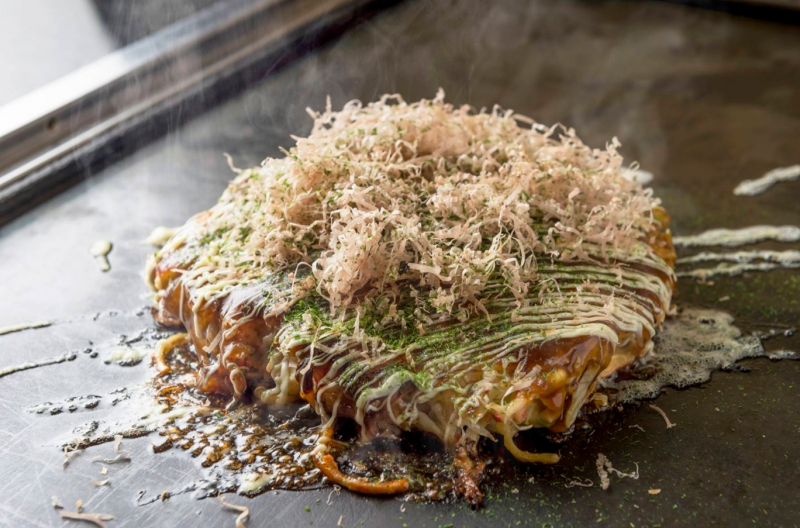
https://osaka-info.jp/en/page/gastronomy-okonomiyaki 
https://osaka-info.jp/en/page/gastronomy-okonomiyaki -
Teppanyaki steakhouses in Japan are a popular way to sample authentic Japanese cuisine prepared right in front of your eyes. The method of cooking is referred to as "teppanyaki." Its name is a combination of the words teppan (which means "iron plate") and yaki (which means "grilled").
Teppanyaki adds an element of fun to the dinner table. You're seated around the chef's large grill plate, watching him expertly prepare your food right in front of your eyes. The beauty of teppan is the theatrical demonstration of the chef's culinary skills. Teppan chefs in many of the larger hotels actually perform incredible stunts, juggling razor-sharp knives, catching tiny morsels with chopsticks, and generally wowing their diners.
Teppan menus are usually course-based and feature some type of beef, ranging from the highly sought-after and expensive Kobe to lower grades. In most cases, vegetables, rice, and pickles are also included. The first modern teppanyaki-style restaurants opened in 1945, despite the fact that traditional Japanese dishes have been grilled on a flat griddle for many years. Tourists preferred these steakhouses over local Japanese diners because they combined Western and Asian cuisines.
https://www.godine.co.uk/teppanyaki-leeds 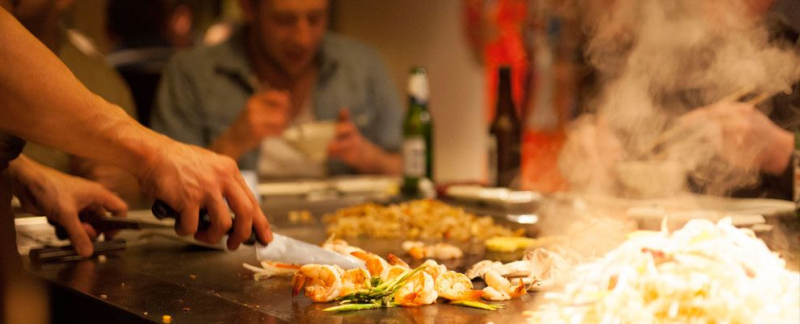
https://www.pinterest.com -
In previous centuries, "sushi" referred to vinegar-preserved pickled fish. Sushi is now defined as a dish made from rice that has been cooked with sushi vinegar. Sushi comes in a variety of shapes and sizes.
Sushi, Japan's most well-known dish, is also one of the most misunderstood. The majority of people mistakenly believe that sushi is simply raw fish. Sushi is a careful combination of vinegared rice, raw fish, and vegetables that comes in a variety of shapes and sizes.
Sushi nigiri is the most well-known type, consisting of a small bundle of rice with a slice of raw fish, egg, or vegetable perched on top. Sushi that is rolled in 'nori' seaweed is known as maki. Temaki sushi is a cone-shaped sushi with a variety of ingredients. Deep-fried tofu is wrapped around the rice in Inari sushi. There are thousands of sushi shops in Tokyo alone, so you're sure to find something to your liking.
Sushi is a pricey, sophisticated dinner served at special occasions in many countries. It is sold in supermarkets in other countries as a healthy lunch option. Sushi is enjoyed by the Japanese at all price levels and in a wide range of restaurants.

https://facts.net/lifestyle/food/types-of-sushi/ 
http://www.mashed.com -
In Japan, this is yet another entertaining and interactive way to eat. Yakiniku is a Korean do-it-yourself barbecue where you cook bite-sized pieces of beef, pork, and vegetables on a grill right in front of your eyes. Ami-yaki (grilled on a net) and Teppan-yaki (grilled on a plate) are the two types of Yakiniku (steaks) (iron plate). Korean side dishes are available in many restaurants. The most well-known method of cooking is charcoal grilling.
The thin slices of meat and vegetables cook quickly before being doused in a sesame, garlic, and sake-flavored soy-based dipping sauce. Because the meat's fat falls to the bottom, it has a crispy texture, and there are times when water is added to prevent the falling fats from igniting, preventing the drying of vegetables and the like, as well as a plump texture. Because the moisture of the meat does not escape, the texture of the meat is softened.
Menus typically offer plates with a variety of ingredients, and a table may order two or three plates and spend hours cooking and eating them slowly. The meal is usually served with rice and pickles.

https://favy-jp.com 
https://welovejapanesefood.com -
Yakitori is arguably one of Japan's most popular dishes. It is so popular in Japan that there are shops and restaurants dedicated solely to yakitori. It, along with Yakisoba (Japanese Stir Fried Noodles) and Okonomiyaki, is one of the most common street foods sold at food stands during festivals (Japanese Savoury Pancake).
The Japanese believe that yakitori is the ideal accompaniment to beer, and yakitori stands are always bustling late at night. Yakitori means "grilled chicken," and some restaurants offer up to 20 different skewers, each representing a different part of the chicken, such as breast meat, wings, heart, parson's nose, and skin. You can season your yakitori with shio (salt) or tare (garlic) (a sweet-salty sauce). Yakitori is a popular and inexpensive snack, costing between 100 and 200 yen per skewer.
Yakitori is skewered chicken from Japan that is cooked on a charcoal grill with sweet soy sauce or just salt. It's ideal for entertaining a large group because it's finger food. It's so delicious that you won't realize how many skewers you've consumed!
Yakitori is also available in department stores and supermarket food courts. Cooked yakitori is frequently purchased for dinner by Japanese people.

https://www.lieferando.de/ 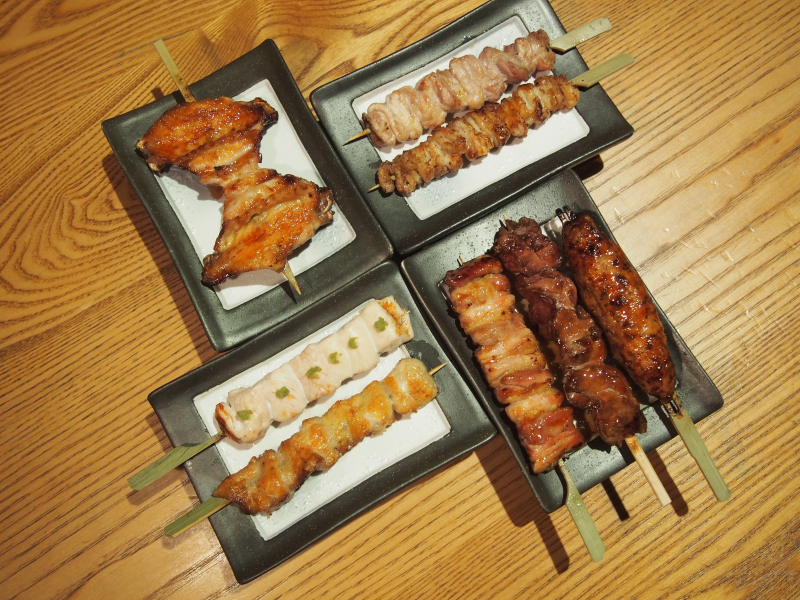
https://www.foodrepublic.com/ -
Shabu shabu is a traditional Japanese beef hotpot dish similar to sukiyaki. Another fun dining option for groups and families is shabu shabu. A pot of boiling soup is placed on the table after plates of thinly sliced meat and vegetables are ordered.
At the table, one- or two-millimeter-thick slices of high-quality beef are prepared on a platter. Each diner picks up a slice of meat with chopsticks and swishes it around in the soup until it's ready to eat Before swishing the next piece, the meat is dipped in a salty shabu shabu sauce and enjoyed. Shabu shabu is a beef-based dish that can also include seafood and pork.
Sukiyaki is a traditional Japanese dish that originated in Kobe City, Hyogo Prefecture in the Kansai region, during the late Edo period. However, there was a dish known as "fish sukiyaki" before the Edo period began.
Sukiyaki is a sweet-salty soy-based soup that includes meat, seafood, and vegetables. The difference is that the ingredients continue to bubble away in the pot, and diners fish out the slices they want, dip them in raw egg, and eat them.

https://savorjapan.com 
http://www.theaaronloy.com/ -
The Japanese delicacy fugu, also known as blowfish, is extremely poisonous, and even the tiniest error in its preparation can result in death. However, the city government of Tokyo intends to relax the restrictions that only highly trained and licensed chefs are permitted to serve this dish.
In Japan and several other countries, the preparation of fugu in restaurants is strictly regulated by law, and only chefs who have completed three or more years of rigorous training are permitted to do so. Domestic preparation can sometimes result in unintentional death.Several hundred different types of blowfish can be found in the seas surrounding Japan, and it is thought that the Japanese have been eating the poisonous fish for as long as 15,000 years.
While in Japan, try fugu – if not for the delicate taste, then for the bragging rights – but only from a licensed expert. Chefs must undergo extensive training in order to prepare these potentially dangerous sea creatures. Fungu can be eaten in a variety of ways after it has been prepared, including as fresh sashimi slices. grilled with vegetables or boiled in a hot pot.

https://bicara.co 
https://www.gettyimages.com. -
Freshwater eel, also known as unagi, is a popular cooked fish in Japanese cuisine. It's common in sushi restaurants, where it's served as nigiri or in rolls. Unadon and kabayaki are popular dishes as well, but they're more difficult to come by outside of Japan. Broiled eel is sometimes served with just a pinch of salt. However, most of the time, eel sauce is used to baste the fish.
Unagi is a popular Japanese dish that is hearty, nutritious, and high in vitamins and protein. Eel is usually served over rice with a sweet soy teriyaki sauce, and the Japanese believe that eating it during the summer months helps them stay awake.
There are delicious unagi restaurants all over the country, especially in the Hamanako area, where the slippery fish has spawned a whole culture.Because of its strong flavor, unagi is frequently served on a bed of rice or as sashimi.
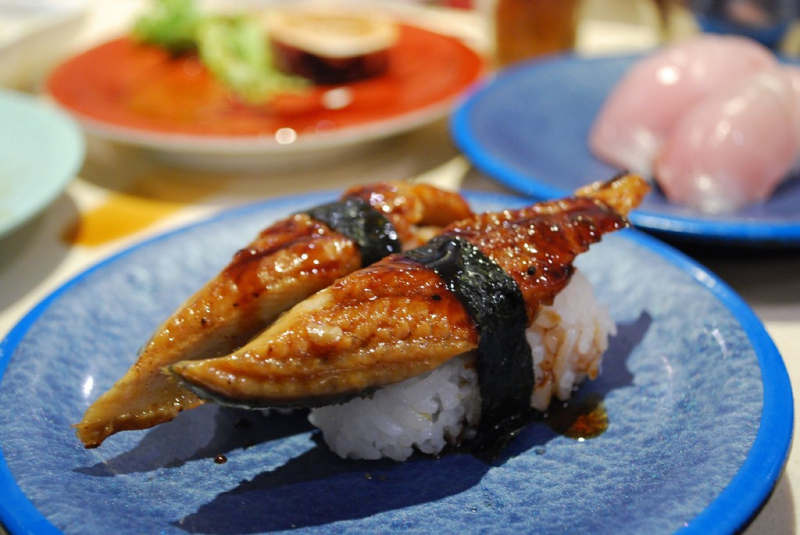
https://www.honeyandlime.co 
https://valuablekitchen.com/how-to-reheat-unagi/













